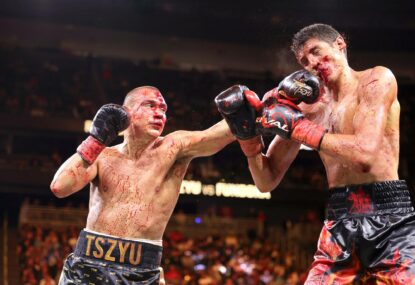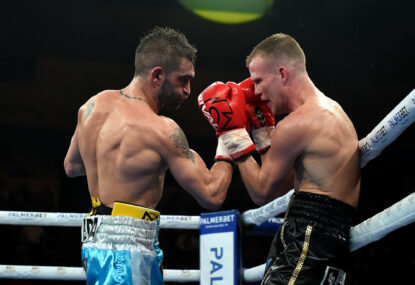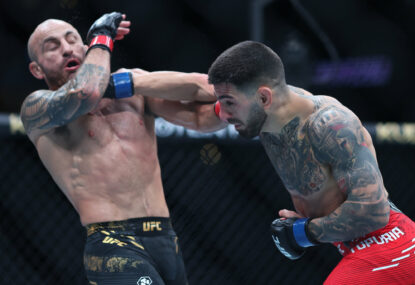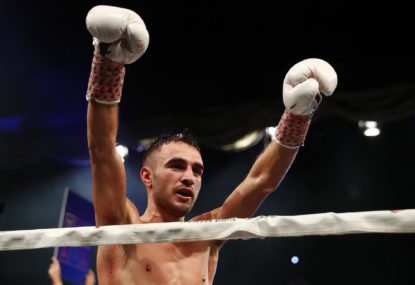For a long time the public has been protected from the real and confronting events of combat sport. With fake wrestling dominating the scene over the past 30 years, the introduction of violent and real cage fighting to mainstream media has been embraced by sports fans around the world.
The Ultimate Fighting Championship (UFC) has begun its domination in the world of combat sports, and looks to destroy any competitors that stand in their way. First on the list is World Wrestling Entertainment Inc (WWE).
For those of you who are unfamiliar with the world of pro-wrestling, it’s huge and has been for a long time. The WWE was founded in 1952 by Roderick James McMahon, grandfather of today’s owner, Vince McMahon.
Since that time it has evolved to become a heavyweight revenue raiser in the entertainment industry, peaking through its golden era of the mid ’80s when the first WrestleMania was held.
WrestleMania is the WWE’s premier annual event and gains the majority of their pay-per-view and ticket sales. WrestleMania III, in 1987, held the record for more than 20 years as the highest-attended indoor sports event in the world, with 93,173 fans.
The first one also drew over one million punters as Hulk Hogan and Mr T graced the stage.
UFC, on the other hand, is only celebrating its 10th anniversary and is the fastest-growing sport in the world, with a 106 per cent year-over-year increase in online interest according to a 2007 graph at compete.com.
In recent years we have seen the continuing growth and expansion of the UFC, as its mother company Zuffa (Italian for ‘fight’) aims to buy out every major fighter and league not only within North America, but around the world.
The Zuffa group, owned by Frank and Lorenzo Fertitta along with UFC President Dana White, bought the UFC in 2001 for US$2 million. Now it is estimated to be worth more than US$1 billion.
The UFC knows its market and has done exceptionally well to work with the New Jersey Athletic Control Board to enforce the Unified Rules of Mixed Martial Arts, in which confronting and real cage fights can occur. They have tailored the once brutal bar fight into a multi-million dollar mainstream sport.
So far the UFC has had 130 fight nights, with the majority of them occurring between 2006 and now. A large surge in popularity for the UFC came in 2009, as Dana White acquired the services of former WWE title holder and cult hero, Brock Lesnar.
Lesnar helped draw a record pay-per-view crowd for UFC 100 with more than 1.7 million viewers, compared to six months earlier where WrestleMania XXV only managed 960, 000 viewers.
Pay-per-view numbers plummeted for the WWE between 2008 and 2010, with WrestleMania XXIV attracting 1,058,000 buys, compared to WrestleMania XXVI, which peaked at poor 885, 000 viewers.
At the start of 2006 UFC 57 drew a pay-per-view crowd of 410 000, compared to UFC 66, less than 12 months later, which drew over one million viewers.
In the last 30 months, the UFC has had seven fights reaching more than on million pay-per-views, including UFC 100.
These staggering figures are just a small indication of the UFC’s rise to prominence, and an insight into UFC domination over the combat sport scene.
The writing is on the wall for the WWE franchise, and they know it. With an obvious decline in pay-per-view numbers for pro wrestling in the past four years, owner Vince McMahon brought in ex-WWE wrestler and Hollywood star Dwayne ‘The Rock’ Johnson as host of WrestleMania XXVII, to win back some of their die-hard fans.
The ensuing fights from the event have paved the way for a clash of WWE legends The Rock vs. John Cena at WrestleMania XXVIII, which is sure to gain back some old fans and should keep the pay-per-view numbers above the one million mark.
This recent spark in numbers has led World Wrestling Entertainment to announce pay-per-view buys are up 30 per cent in North America and up 15 per cent overseas in response to WrestleMania XXVII.
But surely WWE can’t expect old timers and retirees to continually return to the franchise for comebacks in order to push spectator numbers. Nothing lasts forever.
Both sports have built their production style around the hype and entertainment of following specific fighters, their styles and character. Whether it’s from the build-up at the weigh in to the announcement of fighters as the crowd goes wild ring-side, there is a similar pattern that’s hard to ignore.
It seems like fans are now starting to distinguish between real and fake.
Surely the recent decline in viewers for the WWE and the UFC’s enormous growth would indicate there is a trend of fans switching sides.
The question is how long will people continue to watch the fake stuff?
Furthermore, what does the future see for boxing?
An Olympic sport that stretches back to the times of Ancient Greeks, the world is an unorganised mess. With so many belts, and four separate sanctioning bodies, it’s so hard to recognise and separate belt holders from true world champions.
Boxing has only had 16 fights in the past 20 years which have topped more than one million viewers. One of these, Oscar De La Hoya vs. Floyd Mayweather Jr. reached a staggering 2.15 million viewers.
What UFC has done well, compared to boxing, is unify all seven weight classes under one organisation, making it easier for the mainstream public to identify champions and follow specific fighters in their quest for a world title in their weight division.
At the end of the day, everybody loves to see a fight, wherever it may be, and it will always draw a crowd. The sport of fighting is in our genes and stretches back to the dawn of time.
It’s the UFC that have their rules and production down pat and tailored to the mainstream market, hence their dominant position as the king of combat sports, and the likelihood they’ll stay there for many years to come.
UFC and MMA Schedule – including Australian fightcards



































































































